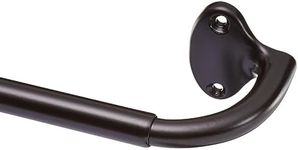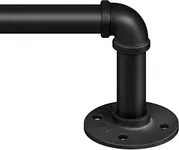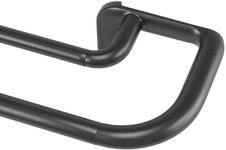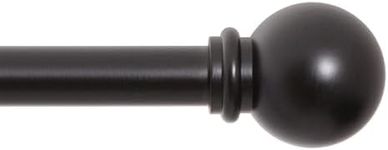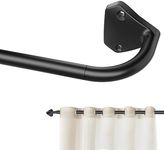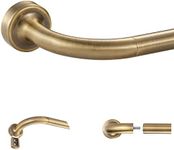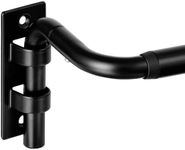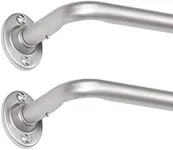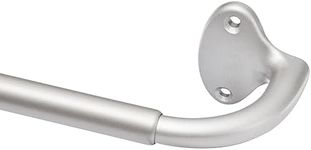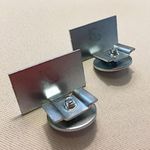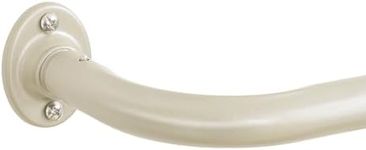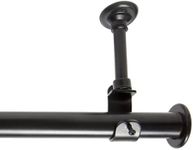Buying Guide for the Best Blackout Curtain Rods
When choosing blackout curtain rods, it's important to consider several key specifications to ensure you get the best fit for your needs. Blackout curtain rods are designed to support heavy, light-blocking curtains that help create a dark environment, ideal for bedrooms, nurseries, or media rooms. The right curtain rod will not only support the weight of the curtains but also enhance their effectiveness in blocking out light. Here are the key specifications to consider when selecting blackout curtain rods.MaterialThe material of the curtain rod is crucial because it determines the rod's durability and ability to support heavy blackout curtains. Common materials include metal, wood, and plastic. Metal rods, such as those made from stainless steel or aluminum, are strong and durable, making them ideal for heavy curtains. Wooden rods can also be sturdy but may require additional support brackets. Plastic rods are generally less durable and may not be suitable for heavy curtains. Choose a material that matches the weight of your curtains and the decor of your room.
LengthThe length of the curtain rod should be appropriate for the width of your window. Curtain rods come in various lengths, and some are adjustable to fit different window sizes. Measure the width of your window, including any additional space you want the curtains to cover on either side. For blackout curtains, it's often recommended to extend the rod beyond the window frame to ensure maximum light blockage. Choose a rod that can extend at least a few inches beyond the window frame on each side.
DiameterThe diameter of the curtain rod affects its strength and the type of curtain rings or grommets it can accommodate. Thicker rods (1 inch or more in diameter) are generally stronger and better suited for heavy blackout curtains. Thinner rods (less than 1 inch) may be suitable for lighter curtains but may not provide the necessary support for blackout curtains. Consider the weight of your curtains and the size of the grommets or rings when selecting the rod diameter.
Mounting StyleThe mounting style of the curtain rod can impact its stability and the overall look of your window treatment. There are several mounting styles, including wall-mounted, ceiling-mounted, and tension rods. Wall-mounted rods are the most common and provide strong support for heavy curtains. Ceiling-mounted rods can create a dramatic floor-to-ceiling effect but may require more complex installation. Tension rods are easy to install but may not be suitable for heavy blackout curtains. Choose a mounting style that fits your installation preferences and the weight of your curtains.
FinialsFinials are the decorative end pieces of the curtain rod that can add a touch of style to your window treatment. They come in various shapes, sizes, and materials, such as metal, glass, or wood. While finials are primarily decorative, they can also help secure the curtains in place. Choose finials that complement the decor of your room and the style of your curtains. If you prefer a minimalist look, opt for simple, understated finials.
BracketsBrackets are the supports that hold the curtain rod in place. The number and type of brackets you need depend on the length and weight of the rod and curtains. Longer and heavier rods may require additional brackets for extra support. Standard brackets are mounted on the wall, but some rods come with ceiling-mounted brackets. Ensure the brackets are sturdy and can support the weight of your blackout curtains. Properly spaced brackets will prevent the rod from sagging and ensure a secure installation.

